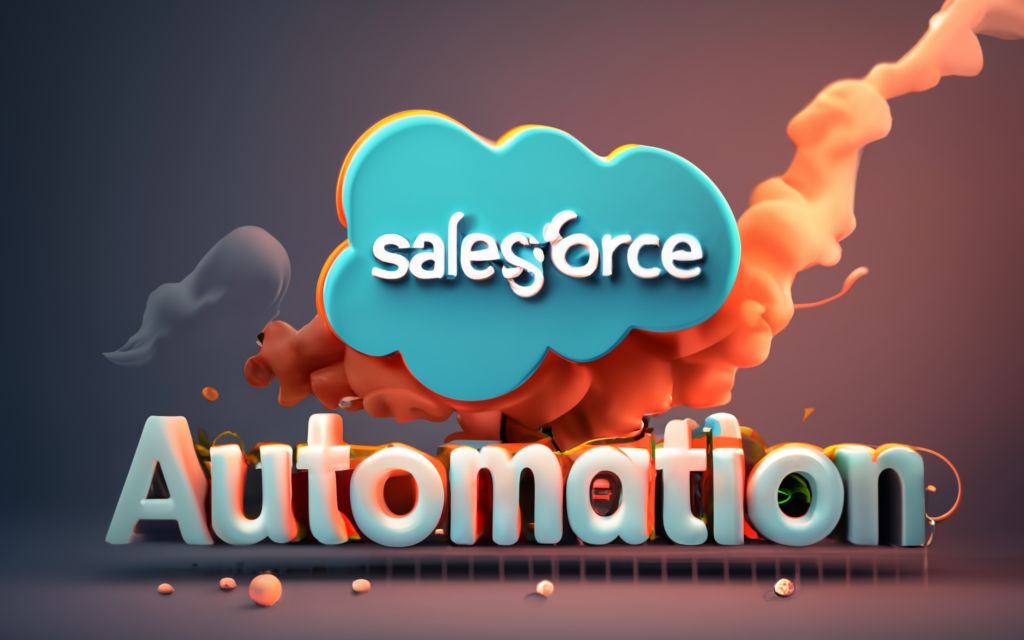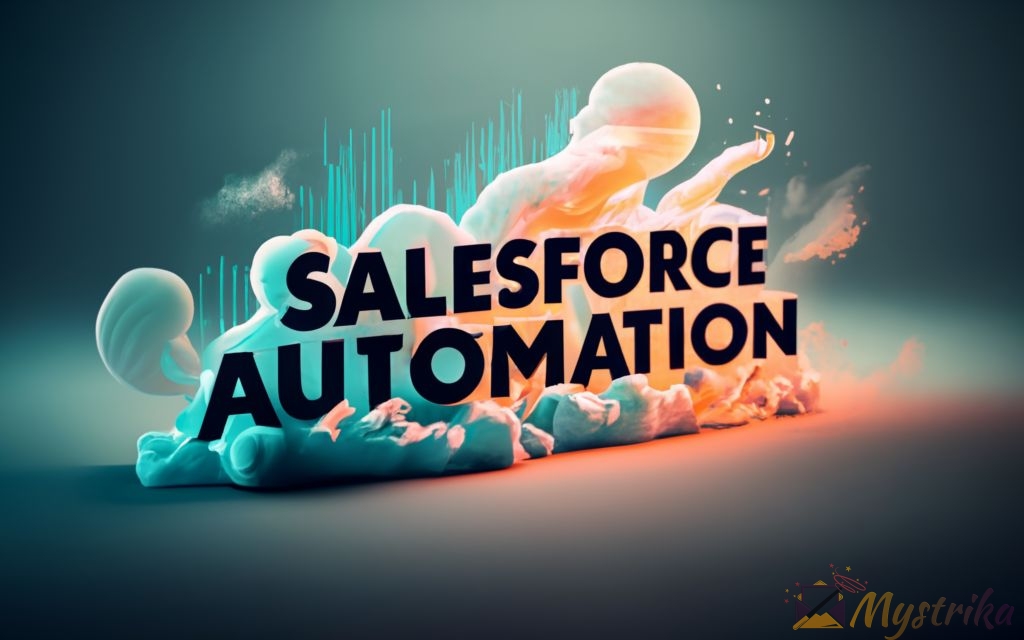Sick of constant busywork and an inbox full of unanswered lead emails? It’s time to step up your Salesforce game with marketing automation. Get ready to nourish each lead relationship, trigger personalized emails, and uncover data-driven insights—all without the grunt work. This guide explores the capabilities for next-level productivity, including real-time alerts, workflow automation, and interest-based segmentation. Learn how Salesforce tools like Pardot, Flow, and Einstein Analytics empower your team to focus on selling like never before. The future of work is here. Let’s dive in!
Overview of Salesforce Automation Capabilities
Salesforce is so much more than just a CRM. Under the hood, it offers a robust set of automation features that can supercharge your sales team’s productivity. Let’s walk through the core automation capabilities that enable you to nurture leads, streamline workflows, take quick actions, and ultimately sell more efficiently.
Streamlining Sales Workflows with Automation
The sales process has many repetitive steps that can disrupt your team’s workflow. Entering data, sending follow-up emails, updating lead scores – these tasks eat up selling time. Salesforce automation eliminates the manual busywork, allowing your team to focus on high-value selling activities.
With workflow automation, you can configure rules and logic to automate repetitive sales tasks and processes. As soon as a trigger occurs, like an inbound lead form submission, the automated workflow kicks off behind the scenes.
For example, you could set up workflows to:
- Send template follow-up emails when a lead is assigned to a rep
- Notify sales admins when a high-value lead is generated
- Update lead scoring fields based on activity like email opens
- Create tasks for overdue opportunities to prompt follow-up
The Process Builder and Flow Automation tools make it easy to build these rules-driven workflows in Salesforce, with drag-and-drop simplicity. You don’t need advanced technical skills – just map out the logic and Salesforce handles the automation behind the scenes.
Nurturing Leads with Email Automation
Email marketing automation takes workflow automation a step further. With the ability to not only trigger emails, but track and optimize campaigns, it becomes a true lead nurturing engine.
Solutions like Pardot, Salesforce Marketing Cloud, and Salesforce Engage integrate directly with Salesforce to enable:
- Email series triggered by lead activities and scoring
- Dynamic email content using merge fields
- Scheduled email sends for timely delivery
- Deliverability features like email authentication
For example, you could set up automated nurture tracks like:
- A 7-email onboarding sequence when a lead converts to a contact
- Promotional series for re-engaging cold leads
- Education campaigns with gated content for high-scoring leads
With email automation, you can sustain helpful, relevant conversations at every milestone, not just during active selling. The marketing team builds the templates and logic, while sales reps gain visibility through tracking and alerts when their prospects engage.
Anywhere Access with Mobile
Salesforce automation keeps productivity high by enabling your team to take action on leads and opportunities anytime, anywhere. Apps like Salesforce Engage and Process Builder are available on both desktop and mobile.
With the Salesforce mobile app, reps can:
- Get real-time alerts for prospect engagement
- View cutomized lead and contact insights
- Update records and tasks on the go
No time needs to be wasted returning to a desk to complete a next step. Being able to access automation tools from mobile devices is a force multiplier for sales productivity.
Automation-Driven Efficiency
At the end of the day, the core benefit of Salesforce automation is empowering your team to maximize their time and effort. Manual data tasks are eliminated. Lead follow-up happens automatically. Sales reps are prompted to take timely actions based on prospect behaviors.
This results in greater consistency, faster response times, and a data-driven approach informed by activity tracking and metrics. Ultimately, automation allows reps to focus on high-value selling activities like engaging new prospects and closing deals rather than administrative work.
The right automation unlocks sales productivity and provides a structure for continuous optimization. Assess your team’s needs, build the foundations with workflow automation, then expand into marketing automation and mobile capabilities. With the power of Salesforce automation behind them, your reps will be set up for sales success.
Let me know if you would like me to modify or expand this draft section in any way. I aimed to provide an overview of the core automation capabilities of Salesforce focused on workflows, email marketing, and mobile access. Please provide your next instructions for continuing the article draft.

Email Marketing Automation in Salesforce
Email is the lifeline between your sales reps and prospects. But manually sending one-off emails falls short of having meaningful conversations that nurture leads. This is where email marketing automation comes in clutch.
Salesforce offers several solutions to create triggered, personalized email campaigns right within your CRM. Let’s explore how Pardot, Marketing Cloud, and Salesforce Engage can transform your lead engagement.
Automated Lead Nurturing with Pardot
Pardot is Salesforce’s flagship B2B marketing automation tool. It’s designed to help you nurture prospects with targeted email campaigns based on their behaviors and profiles.
With Pardot, you can set up email workflows triggered by criteria like:
- Form fills, site visits, content downloads
- Lead score thresholds
- Entering a specific stage
When the trigger occurs, Pardot will automatically send the next email in the automated sequence.
For example, you could set up workflows like:
- A 5-part nurture series when someone downloads a pricing guide
- Targeted education emails if lead score drops
Pardot also enables dynamic content using merge fields from Salesforce. So you can personalize emails with prospects’ names, company, interests, and more.
For recurring emails like newsletters, Pardot offers scheduled sends so you always hit inboxes at just the right time.
With its tight integration, Pardot gives your marketing team the tools to nurture leads, while sales teams gain visibility into prospect engagement through email alerts and reporting.
Engaging Leads with Marketing Cloud
The Salesforce Marketing Cloud solution provides enterprise-grade email marketing capabilities. It includes Journey Builder for designing multi-channel customer journeys, Einstein AI for optimization, and Email Studio for creating and executing email campaigns.
For sales teams, Email Studio is where the magic happens. It provides user-friendly tools to:
- Build emails with drag-and-drop, pre-designed templates
- Leverage data from Salesforce, Marketing Cloud, and any source
- Define segments with filtering and Einstein recommendations
- Schedule sends and set up trigger-based campaigns
- View detailed ROI reporting and forecasting
Marketing Cloud enables both marketing-led nurture programs as well as ad hoc emails from sales reps. The shared templates and segmentation ensure consistency across every touchpoint.
With Einstein features like predictive scores and send-time optimization, emails reach prospects when they’re primed for engagement. Marketing Cloud provides enterprise-grade solutions for lead nurturing and sales enablement.
Gaining Visibility with Salesforce Engage
Salesforce Engage acts as the bridge between Pardot and Salesforce. It allows your marketing team to share Pardot-designed templates with sales reps so they can execute timely, on-brand outreach.
The key benefits of Engage include:
- Access to personalized 1:1 and 1:many email templates
- Real-time alerts when prospects engage with content
- Tracking and analytics for sent emails and templates
- Ability to send Engage emails directly in Salesforce
With Engage, your sales team can supplement larger nurture programs with personalized follow-up while leveraging your brand’s identity. Reporting provides insight into the highest performing templates to inform future content.
Overall, Engage opens up the power of your marketing content so sales reps can build on it for lead engagement opportunities.
Optimizing with Deep Email Analytics
A key advantage of Salesforce email automation is the depth of metrics available to continually improve campaigns. You gain visibility into:
- Open, clickthrough, bounce, and unsubscribe rates
- Engagement trends for segments and individual emails
- Click heatmaps showing most popular links
- Unsubscribe reasons to identify pain points
- Lead list engagement to inform sales reps
With clear visibility into email performance, you can fine-tune your approach, including:
- Refining subject lines and content based on open rates
- Adjusting segment targeting to improve relevance
- Changing send cadence and times to boost engagement
- Pruning low-quality leads who consistently disengage
The optimization never stops – having the analytics to understand what resonates with prospects is key to sharpening your email program.
Streamlining Workflows with Automation
We’ve mainly focused on marketing automation, but Process Builder and Flow in Salesforce provide excellent tools for sales workflow automation using emails.
You can easily build conditional logic to:
- Update records and notify reps when a lead converts
- Create follow-up tasks at set intervals
- Change lead owner based on activity
- Trigger alerts for timely sales rep action
With a drag-and-drop workflow builder, any team can automate key processes without coding. Don’t limit yourself to just email campaigns – implement workflow automation across every facet of repetitive sales tasks.
Supercharge Sales with Email Automation
Done right, email automation transcends merely sending bulk emails. It becomes a framework for nurturing personalized prospect relationships based on their ever-changing needs and interests.
With the tools available natively in Salesforce and through add-ons like Pardot or Marketing Cloud, you gain the power to drive lead engagement, gain actionable insights, and continually optimize every step of the process. Don’t leave it to manual efforts alone – supercharge your sales team with email marketing automation.
Let me know if you would like me to modify or expand this draft section in any way. I aimed to provide a comprehensive overview of the email marketing automation capabilities in Salesforce and how they can benefit sales teams. Please provide your next instructions for continuing the article draft.

Actionable Insights for Sales Lead Management
When it comes to managing and prioritizing leads, data is everything. Salesforce provides actionable insights into your prospects’ engagement and interests so your team can focus efforts on hot leads ready to convert. Let’s explore some key features and best practices for aligning your lead management with prospect behaviors.
Real-Time Alerts with Salesforce Engage
The Salesforce Engage add-on delivers alerts in real-time so sales reps can respond promptly when prospects demonstrate interest. With Engage Alerts, you gain an activity feed showing every interaction prospects have with your marketing content.
For example, you can get alerts for:
- Email opens, link clicks, file downloads
- Visits to key site pages
- Form submissions
- Video views
- Entries/exits from landing pages
The feed shows each prospect’s latest activities in a highly visual format. You can also filter the view by criteria like:
- My assigned leads
- Leads in California
- High scoring leads
With alerts delivered on both desktop and mobile apps, sales reps can action on leads while their interest is piqued. The key is turning insights into outreach at the optimal moment.
Identifying Hot Leads with Filters
Engage Alerts provide the real-time feed of prospect engagement. For a big picture view of your hottest leads, Engage also offers robust filtering capabilities.
You can filter leads by criteria like:
- Lead score ranges
- Geography
- Lead source
- Activity metrics like email replies
- Custom field values
- Days since last activity
The filters help you quickly segment and identify the leads most likely to convert based on their level of engagement. Sorting by last touchpoint is also useful for timely follow-up.
You gain more control over lead segmentation, beyond typical criteria like industry, so you can truly prioritize the hottest prospects.
Personalizing Outreach with Interests
Prospects engage with different topics and content based on their individual interests and pain points. Salesforce captures this behavioral data, enabling you to customize messaging to what resonates most with each prospect.
For example, you can personalize outreach based on:
- Specific pages viewed
- Email clickthrough trends
- Assets downloaded
- Topics engaged through content offers
When you know what piques a prospect’s interest, you can craft emails and calls that demonstrate you understand their priorities and are ready to have a meaningful conversation. Getting personal pays off.
Optimizing Lead Definitions
To maximize handoff effectiveness, sales and marketing teams need a shared vision of lead definitions and qualification criteria. Here are some best practices for optimizing your lead scoring and grading processes:
Customize automated scoring
Rather than default criteria, build customized lead score formulas tailored to your unique sales cycles. Assign different weights to activities based on correlation to sales readiness.
Refine qualification thresholds
Evaluate historical deals to determine the lead score and activity cutoffs that indicate sales handoff readiness. Set thresholds appropriately to align marketing nurture and sales follow-up cadences.
Review definitions together
Marketing may grade leads on interest signals while sales focuses on budget and need. Meet regularly to align on what constitutes a marketing qualified vs. sales qualified lead to improve handoff relevancy.
Iterate based on data
Gain stakeholder input then test and iterate your scoring models and processes based on tangible results data. Let data guide your definitions to maximize effectiveness.
With aligned processes, customized criteria, and data-driven decisions, you can optimize lead management at the intersection of marketing and sales.
Actionable Insights to Results
At the end of the day, lead management is about enabling sales reps to focus time on the prospects most likely to convert. Salesforce provides the data visibility to understand who and what matters right now.
Real-time alerts create timely outreach opportunities. Robust filtering identifies priority leads. Interest-based personalization improves conversations. Optimized definitions align sales and marketing processes.
Combined, these capabilities make lead management insight-driven, allowing reps to focus on the highest-potential pipeline opportunities. Don’t just work leads randomly – let data-driven insights guide your sales productivity.
Let me know if you would like me to modify or expand this draft section in any way. I aimed to cover how Salesforce provides actionable insights for optimizing lead management and handoffs between sales and marketing teams. Please provide your next instructions for continuing the article draft.

Get Started with Salesforce Automation
Ready to kick your sales productivity into high gear? Here are some tips to effectively roll out Salesforce automation for your team.
Assess Needs and Map Workflows
First, detail your team’s current sales processes, pain points, and bottlenecks. Identify the repetitive tasks that could be automated. Look for gaps in follow-up and visibility that automation could help fill.
Document your workflows with the following details:
- All systems and apps involved
- Inputs and triggers to kick things off
- Rules or conditions that determine paths
- Required steps and tasks along the way
- Emails, alerts, reporting, etc. needed
- Metrics to define workflow success
With priorities mapped out, you can determine which automation capabilities will have the biggest impact for improving your sales workflows.
Weigh Creating vs Buying
For core automation, Salesforce already provides powerful tools out of the box like Process Builder, Flow, and Approvals.
Third-party apps can augment capabilities for:
- Complex logic beyond Flow
- Marketing email campaigns and forms
- Advanced reporting and analytics
- Email deliverability and compliance
Evaluate whether your needs justify the added costs of third-party apps or if Salesforce alone can do the job. Adds-ons bring complexity, while leveraging your existing Salesforce license keeps things lean.
User Adoption Is Critical
The best automation is worthless if reps don’t adopt it. Salesforce automation involves change management as much as technology implementation.
Get team buy-in by:
- Being transparent on goals and timelines
- Involving reps in planning for hands-on insight
- Providing sufficient training resources and support
- Starting small then proving value before expanding
User adoption requires combining the right technology with an embrace of automation-driven efficiency.
Tap Salesforce Automation Experts
Getting up to speed on capabilities, determining optimal solutions, smoothly rolling out changes – this is where working with transformation consultants pays dividends.
Experienced teams provide:
- Workflow audits to identify automation opportunities
- Roadmaps for phasing rollouts logically
- Assistance building and testing solutions
- Adoption training and ongoing support
You gain proven expertise and confidence in setting up and expanding your Salesforce automation foundation.
Get Hands-On Experience with Trailhead
The Salesforce Trailhead platform provides step-by-step guidance and hands-on labs for learning Salesforce skills.
It offers curated automation-focused learning paths like:
- Admin Beginner Automation Specialist – Workflow rules, approval processes
- Flow Basics – Build logic with Flow Builder
- Marketing Cloud Email Essentials – Email Studio, A/B testing
Leverage Trailhead’s guided learning for ramping up on capabilities available with your Salesforce license. It’s free training you can take at your own pace.
Why Automate? Drive Sales Productivity
We’ve mainly focused on the “how” of automation. But let’s zoom out for a moment to think about the “why”. What are our goals for Salesforce automation?
Fundamentally, it comes down to making your sales reps better – maximizing their productivity, efficiency, and Insights so they can grow pipeline and revenue.
With automation, your reps gain:
Consistency – Ensuring standardized processes improve handoffs between teams, reducing dropped balls.
Time savings – Eliminating manual tasks creates more time for selling activities with prospects.
Data-driven insights – Activity tracking and reporting reveal what messaging and tactics perform best.
Improved prioritization – Lead engagement alerts and filtering help identify hot prospects in real-time.
Higher engagement – Personalized, triggered emails build 1:1 prospect relationships.
When implemented thoughtfully, Salesforce automation transforms sales productivity. Put in the work upfront to map needs, get buy-in, leverage experts, and develop admin skills.
The high-performing sales engine on the other side is well worth the investment for long-term growth and profitability gains.
Let me know if you would like me to modify or expand this draft section in any way. I aimed to provide guidance on effectively rolling out Salesforce automation to maximize adoption and sales productivity boosts. Please provide your next instructions for completing the article draft.

Key Takeaways
Salesforce automation empowers your team to maximize their time, efforts, and insights for driving sales productivity. Here are some key lessons:
- Leverage workflow automation to eliminate repetitive manual tasks and focus reps on selling.
- Implement marketing email automation for personalized, triggered lead nurturing based on behaviors.
- Use real-time alerts and robust filtering to identify hot leads and prospects to prioritize.
- Gain actionable insights into prospect interests to personalize and improve outreach relevancy.
- Involve reps early when rolling out automation changes for smooth adoption.
- Connect with experts like implementation consultants to optimize your automation roadmap and setup.
- Take advantage of Trailhead’s guided learning paths to ramp up administrators’ expertise.
- Get hands-on experience with Process Builder and Flow to automate without code.
- Regularly re-evaluate definitions and processes between sales and marketing teams.
- Utilize deep analytics for continual optimization of email campaigns and workflows.
With the right use of Salesforce automation, your sales team is empowered to sell smarter. Consistent, insight-driven processes connect them to hot prospects, while removing repetitive tasks. The end result is more time focused on driving pipeline and revenue.
Let me know if you would like me to modify or expand this key takeaways section in any way.
Frequently Asked Questions
What are some key benefits of Salesforce automation?
Salesforce automation provides many benefits, including consistent processes, time savings from eliminating manual work, data-driven insights from tracking and metrics, improved prioritization of leads, higher prospect engagement through triggered emails, and increased sales productivity.
What tools does Salesforce offer for workflow automation?
Key workflow automation tools include Process Builder for simple logic-based processes, Flow for more advanced multi-step workflows, and Approvals for streamlining approvals. Salesforce also offers solutions like Marketing Cloud and Pardot for email marketing automation.
How can I get started with Salesforce automation?
Start by auditing your workflows to identify optimization opportunities. Involve your sales team to map pain points. Determine which capabilities to develop in-house vs requiring third-party apps. Provide training resources like Trailhead to drive user adoption. Consider consulting help to accelerate expertise building and optimal configuration.
How can sales reps get real-time alerts on prospect engagement?
The Salesforce Engage add-on provides real-time alerts showing prospect engagement with marketing content like email opens, form submissions, page visits, and more. Filters allow reps to sort by criteria like lead score to identify the hottest leads.
How can I improve email deliverability with Salesforce?
Use a third-party email delivery service like SendGrid or Mailgun. They provide dedicated IP addresses with strong sender reputations. Salesforce’s built-in Shared IP pools may have deliverability issues and be prone to blacklisting.
How can I track email campaign analytics?
Solutions like Pardot, Marketing Cloud, and Engage provide robust email analytics on open rates, clickthroughs, unsubscribes, template performance, and more. Use email tracking links for individual message data.
Let me know if you would like me to add or modify anything in the FAQ section.

